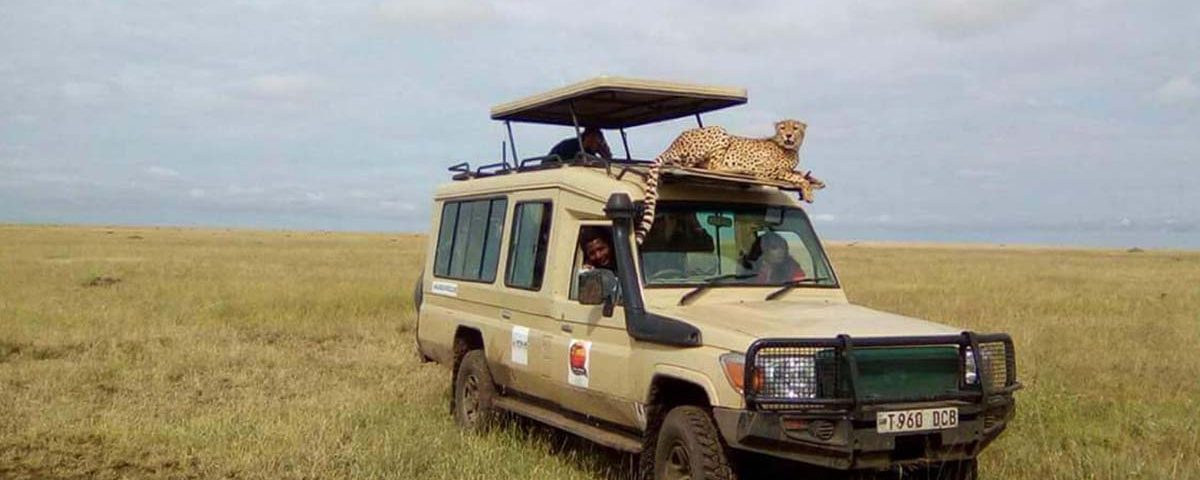Tanzania Safety: Tanzania Travel Advice

Is Tanzania safe? If you chose the right tour operator, yes.
Deciding on a journey to Tanzania and Zanzibar is one of the best decisions you will ever make, as it is one of the most beautiful journeys you can experience.
You now need to plan your trip and prepare yourself for it. That’s why we have written this guide containing all the tips for a safe trip to Tanzania and Zanzibar, from how to get to the country, to what vaccinations and medical precautions to take.
It is essential if you are going to travel to Tanzania on a safari that you are well prepared and feel safe and sound, so as not to ruin the experience. Together, we’ll find out how to get to this country, maintain your health, avoid diseases, and provide all the information you need for a safe safari in Tanzania.
How to get safety to Tanzania
To go on a safari, you must first reach Tanzania: but don’t worry, it’s really simple!
Tanzania is easily accessible by both sea and air, although the latter is much better. There are three possible airports to land at: Dar es Salaam International Airport (DIA), Zanzibar International Airport (ZIA), and Kilimanjaro International Airport (KIA). All our itineraries commence from the last airport located in one of the most famous places in Africa.
Departing from Italy, it is currently not possible to reach Tanzania by direct scheduled flights, meaning that you will need to book a charter flight. We recommend that you book your flight as soon as possible to save money.
How long should a safari last?
The duration of a safari can depend on a number of factors. However, I personally believe that it should last for a minimum of 6 days.
Tanzania is as enchanting as it is big, and there are so many parks and other places to visit throughout the country, that it is almost impossible to experience it to the full in fewer days. When preparing for safaris in Tanzania and Zanzibar, you should try and schedule at least a week, so as to have time to enjoy all the wonders of this African land.
There are so many things to see in Tanzania: dozens of parks, lakes and maritime destinations such as Zanzibar and Mafia which are just so enchanting.
You can find itineraries here ranging from 4 days, such as the Dumbo Safari, to 9 days, such as the Mamba Safari which we strongly recommend because of its unique experiences.
When to go on a safari in Tanzania
When organizing a safari in Africa, it is essential to choose the best date on which to leave. The best time to travel to Tanzania depends on several factors, such as the temperature, the migratory flows of animals, and the places you plan to visit.
The best months of the year to go to Tanzania are: June, July, August, September and October.
- September and October, for example, are the ideal periods to visit Park Arusha, characterized by its pink flamingos. You can also see several buffaloes, one of the Big Five, the largest animals in Africa, near Arusha at this time of the year.
- October is by far the best month to go on a safari in Tanzania, both for the wealth of animals in all the parks and for the low likelihood of rains.
- December, January and February are the best periods to visit the Serengeti Park and the Ngorongoro Conservation Area, especially as you could get to see the animals in the area giving birth, if you are lucky.
For those wishing to travel to Tanzania to enjoy nature, it is best to choose a period from May to October. To see wildebeest migrations, we recommend you visit Tanzania around June-July, while birdwatchers will fall in love during the rainy season around November-April, at which time we strongly recommend a stop at the Serengeti.
What vaccines do you need to travel safety in Tanzania and Zanzibar?

Tanzania vaccinations
For your safety in Tanzania, you may have thought about which medications and vaccines you need and which are mandatory. Truth is, despite the rather poor medical and hygienic conditions, especially in non-touristic areas, this is a rather safe land for tourists. And should you travel with a tour operator, odds are you will always visit healthy places where it is difficult to get sick.
The two most typical health scares in Tanzania are Yellow Fever and Malaria, but there are NO mandatory vaccinations.
Vaccination against yellow fever is only mandatory for those arriving Tanzania by land from at-risk countries, or if arriving Africa by air after spending more than 12 hours at airports in at-risk countries.
Malaria is however the most serious and dangerous disease in Tanzania. The following are some helpful measures to prevent the outbreak of infection caused by the bite of the anopheles mosquito.
- Wear opaque and repellent clothes
- Use Biokill, one of the most recommended insecticides available both online and in pharmacies, sprayable on clothes and lasting about 15 days.
- Carry out an anti-malarial prophylaxis (NOT recommended)
- Contact the international traveller’s centre of your local health authority, which will evaluate and advise you on the medical precautions to take.
Non-compulsory but recommended vaccinations include trivalent polio-tetano-difterite and hepatitis B.
What type of visa and documents are needed?
Two different document types are essential for safaris in Tanzania.
- Your passport, which must be valid for at least 6 months at the time of entry into the country.
- Entry visa, required for both touristic and business trips at a cost of 42.40 €. An entry visa must be obtained before departure at the Embassy of Tanzania in Rome or the Honorary Consulate in Milan, while the application form can be easily downloaded at this link: http://www.embassyoftanzaniarome.info/
What currency is used in Tanzania?
The Tanzanian Shilling is used in Tanzania and Zanzibar, and is worth:
1 Euro = 2,773.7720 Tanzanian Shilling
1 Tanzanian Shilling = 0.0004 Euro
1 US Dollar = 2,245.6056 Tanzanian Shilling
Tanzania has a number of exchange offices that accept both Euros and dollars. Credit cards, on the other hand, are not very common, and a commission of 5-10% is often charged on each purchase. It is highly recommended that you exchange the currency in your home city, as it will be more convenient.
What time zone is Tanzania in?
Although Italy and Tanzania may seem very distant, their time zones only differ by a few hours. Tanzania is in fact two hours ahead of us. Their time zone is:
- Eastern Africa Time (EAT), UTC/GMT +3
Meaning if it’s 10:00am in Tanzania, then it’s 12:00pm in Italy.
How is the climate like?
Tanzania has a tropical climate characterized by two dry seasons and two wet seasons known as rainy seasons, all of which are regulated by monsoons and trade winds from the Indian Ocean. Temperatures around the coasts and in places such as Zanzibar and the surrounding area are around 20-26°C, while the climate in the hinterland is drier, ranging from 21-23°C. Tanzania’s climate is essentially divided into four different seasons:
- The short dry season, which runs from July to September
- The long dry season, which runs from December to March
- The short rainy season, which runs from late October to early December
- The long rainy season, which runs from late March to mid-June
The best time to visit Tanzania is from July to September, which are the coolest and driest months. The December to February period can also be taken into consideration, especially for itineraries that include seaside resorts.
What should you bring on a safari?
To travel safely through Tanzania, it is essential to remember several things and bring two types of clothing: light and practical wears for safaris in the warmer parks, and warm and wind-resistant wears for cold moments, such as on Kilimanjaro.
The clothing should be light in colour (white is not recommended because it easily gets dirty, neither are darker colours because they attract mosquitoes and sunlight), comfortable, light and opaque are the way to go. It is important to wear long-sleeved shirts and sweaters, and opaque socks or clothing that reduces the surface area of bare skin, so as to avoid insect bites. Sweatshirts and windbreakers are also recommended during dry seasons, when morning and evening temperatures are quite low.
It is also essential that you remember all documents and visas, medications, equipment and so on.



